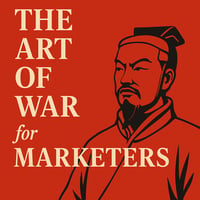If there’s one thing marketing has taught me over the years, it’s this: change is constant. Tools...
Tracing the Evolution of Digital Marketing Terminology
If you think keeping up with terms like "skibidi toilet", "rizz", "sigma", "bussin", "ate", and "fanum tax" is tough, try staying current with the jargon in marketing. Our industry evolves at a rapid pace, and with each shift comes a wave of new buzzwords, acronyms, and strategic frameworks. What was once simply 'web marketing' has grown into a vast landscape of specialized terms and ever-changing methodologies.
Marketing has never been static-and neither has the language we use to define it. As technology has evolved, so too have the terms we use to describe the ever-expanding set of tools and strategies we deploy to reach audiences. As someone who's spent nearly two decades in digital marketing, I've watched terms rise, fall, and morph in meaning. Let's take a moment to explore how we got from "web marketing" to the complex matrix of modern digital marketing terminology we use today.
The Dawn of Online Promotion: Web Marketing & Internet Marketing
In the late 1990s and early 2000s, when businesses first ventured online, the term "web marketing" emerged to describe the basic activities of creating websites and banner ads. Soon after, the broader term "internet marketing" became more popular, encompassing not only websites but also email campaigns, early SEO tactics, and web-based display advertising.
At this point, the internet was still a novelty for many brands. The language reflected that novelty-the "web" was something separate and new. "Internet marketing" became the umbrella term for all efforts to reach consumers via the online space.
Transition to Digital Marketing
As digital technology matured and expanded beyond just the internet (think mobile phones, digital TV, apps), the term "digital marketing" rose to prominence. It signaled a shift in scope: we were no longer just marketing on the internet but across a range of digital channels.
"Digital marketing" became the modern umbrella term, encompassing everything from search engine optimization (SEO) and search engine marketing (SEM) to social media, mobile apps, and programmatic advertising. It absorbed previous terms like "internet marketing" and "e-marketing", reflecting the growing complexity and convergence of platforms.
The Evolution of PPC, CPC, and SEM
In the early 2000s, paid digital advertising began to take shape with the rise of pay-per-click (PPC) advertising models. Platforms like Google AdWords (now Google Ads) popularized cost-per-click (CPC) bidding, allowing advertisers to pay only when users clicked on their ads.
Initially, PPC and CPC were used interchangeably with SEM (Search Engine Marketing). At that time, SEM referred almost exclusively to paid search advertising. Over time, however, the meaning of SEM broadened in some circles to include both paid and organic search efforts-leading to confusion and debates within the industry. Today, many professionals still use SEM to refer specifically to paid search, while others treat it as encompassing SEO as well. Context remains key.
The Rise of Specialized Terms
As digital marketing became more sophisticated, sub-disciplines emerged with their own names and niches:
-
Content Marketing: Originally just a tactic within SEO or branding, content marketing evolved into a standalone strategy focused on creating valuable, relevant content to attract and retain customers.
-
Inbound Marketing: Coined by HubSpot, this term distinguished permission-based strategies (blogs, SEO, gated content) from traditional outbound methods.
-
Growth Marketing: A startup-era evolution of digital marketing with a laser focus on experimentation, user acquisition, and metrics-driven scaling.
-
Performance Marketing: A term that emphasizes measurable results-think CPA, CPL, and ROI-over brand-building. Paid social, PPC, and affiliate marketing often fall under this umbrella.
-
Demand Generation Marketing: This term gained traction in B2B and SaaS circles to describe a strategic approach focused on building brand awareness and nurturing long-term interest. Demand gen spans multiple channels and blends content, email, webinars, paid media, and sales enablement to generate qualified leads and pipeline.
Each of these terms branched off from "digital marketing", driven by either new technologies, platform shifts, or changes in consumer behavior.
The Current Landscape: Convergence and Complexity
Today, these terms coexist but often blur together. A single campaign might involve SEO (a digital marketing tactic), supported by content marketing (a strategy), measured through performance metrics, and designed with growth marketing or demand generation principles in mind.
Marketers now wear many hats and operate in a landscape that defies strict categorization. The language we use has had to adapt to reflect that interconnected reality.
Final Thoughts
Terminology matters. It shapes how we build teams, allocate budgets, and define success. While it's easy to dismiss marketing jargon as just buzzwords, these terms often signal deeper shifts in strategy and mindset.
As we move forward, new platforms and consumer behaviors will no doubt spark the creation of even more specialized terms. But understanding the lineage of today’s language helps us see the full picture-and navigate the future with greater clarity.
Joshua Banks
Digital Marketing Leader & Strategist




